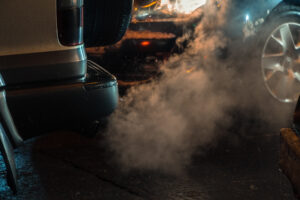
Auto Innovators gives EPA 5 ways to ‘fix’ its ‘out of whack’ proposed emissions rules
By onLegal
Ahead of the July 5 closure of public comment on the U.S. Environmental Protection Agency (EPA)’s proposed light- and medium-duty vehicle emissions rules, Alliance for Automotive Innovation (Auto Innovators) President and CEO John Bozzella wrote they’re out of reach.
Auto Innovators’ members include nearly all major automakers. The proposed rules, if approved, would be phased in over model years 2027-2032 vehicles to cut emissions by 56% for light-duty vehicles and 44% for medium-duty. They build upon the existing MY 2023-2026 requirements that EPA says cut pollution by 13% annually.
The EPA seeks to make the rules more stringent to protect public health and welfare from the effects of greenhouse gas (GHG) emissions. They’re also in answer to President Joe Biden’s executive order on climate change as well as the Bipartisan Infrastructure Law and the Inflation Reduction Act, which support the expansion of the manufacture, sale, and use of zero-emission vehicles.
In addition to the proposed rules, EPA asks the public to comment on its three alternative levels of stringency, the range of standards across the alternatives and the proposal, and if the standards should continue to increase in stringency for future model years.
In Bozzella’s June 28 blog post, he wrote that the administration is jumping ahead of its own 2021 executive order that called for 50% of new vehicles sold to be electric vehicles (EVs); now proposing that more than 60% of sales should be battery electric (BEVs) by 2030 including 37% by 2027. The order states that the mix could be battery electric, plug-in hybrid electric, or fuel cell electric vehicles. Now, it’s proposed to strictly be BEVs.
“That 2021 executive order was a stretch goal (then and now) but the auto industry backed a 40-50 percent EV sales target – presuming the requisite public policies would also be in place,” Bozzella wrote. “When the companies that will build the millions of EVs required by these regulations say the pace and balance of EPA’s rules are out of whack – in fact, we told the agency those rules are ‘neither reasonable nor achievable in the timeframe provided’ and opens the door to China – regulators and policymakers should believe them.”
He then listed five ways EPA can fix its proposal while still reducing carbon emissions and increasing automotive electrification:
-
- “Don’t write off plug-in hybrids and fuel cell EVs” — Bozzella notes that a BEV-only approach will “unquestionably reduce consumer choice and push automakers to non-compliance with such unachievable requirements.”
- “Don’t siphon finite resources from EVs to gas-powered vehicles” — The proposal sets new rules for internal combustion engine (ICE) vehicles that are already near zero emissions so requirements to invest in both pull money away from zero-emissions technology and vice versa.
- “Sync up EPA’s rules with yet-to-be-released Corporate Average Fuel Economy (CAFE) standards” — Vehicle emissions are regulated by three federal agencies that enforce four sets of regulations. “At the very least, if an automaker complies with EPA’s greenhouse gas emissions rules, they shouldn’t be at risk of violating the Transportation Department’s coming CAFE rules and subject to significant civil penalties (that create no environmental benefit but do levy additional costs on consumers, workers and manufacturers),” Bozzella wrote.
- “Sync up the rules and eliminate conflict with state standards” — For example, in addition to federal regulations, Californian vehicles must meet seven sets of regulations from the California Air Resources Board (CARB). Bozzella says the agency and board need to get on the same page and ensure that they’re not creating unnecessary compliance burdens.
- “Keep score (and keep track) of conditions outside the vehicle,” such as residential and public charging, critical mineral availability, and grid capacity. “EPA should develop a roadmap and methodically track this data so the country – and all sectors of the economy responsible for the transformation – can collectively assess progress.”
“EPA should release a public report taking stock of the overall EV market, the mineral and processing supply chain and state of refueling and charging infrastructure,” Bozzella continued. “For example: How is the transition going? Is it meeting EPA’s milestones? If not, what’s the fix?
“EPA is asking for a huge BEV ramp-up in the next few years. On a graph, their model looks like a hockey stick. The pitch of that curve is most aggressive in the next few years when market conditions (consumer acceptance, supply chains, infrastructure) are most speculative.”
In May, Auto Innovators asked EPA to extend the public comment deadline on its proposed emissions rules to either Aug. 7 or to align with the National Highway Traffic Safety Administration (NHTSA)’s Corporate Average Fuel Economy (CAFE) rulemaking deadline. Several other groups also asked for an extension including the National Automobile Dealers Association (NADA).
EPA denied an extension because it found that a window of 83 days, which began back in April, and a three-day public hearing are sufficient to provide comment and data.
Reuters reports that EPA said it would respond to Bozzella’s June 28 comments after July 5.
Images
Featured image credit: Liukov/iStock
